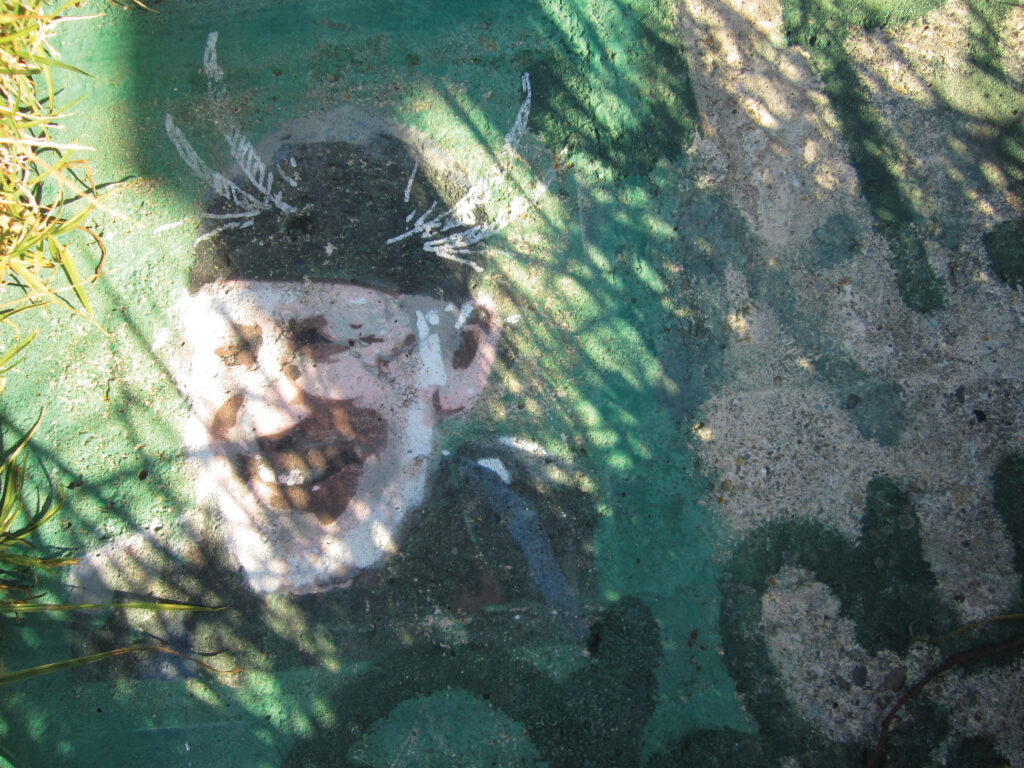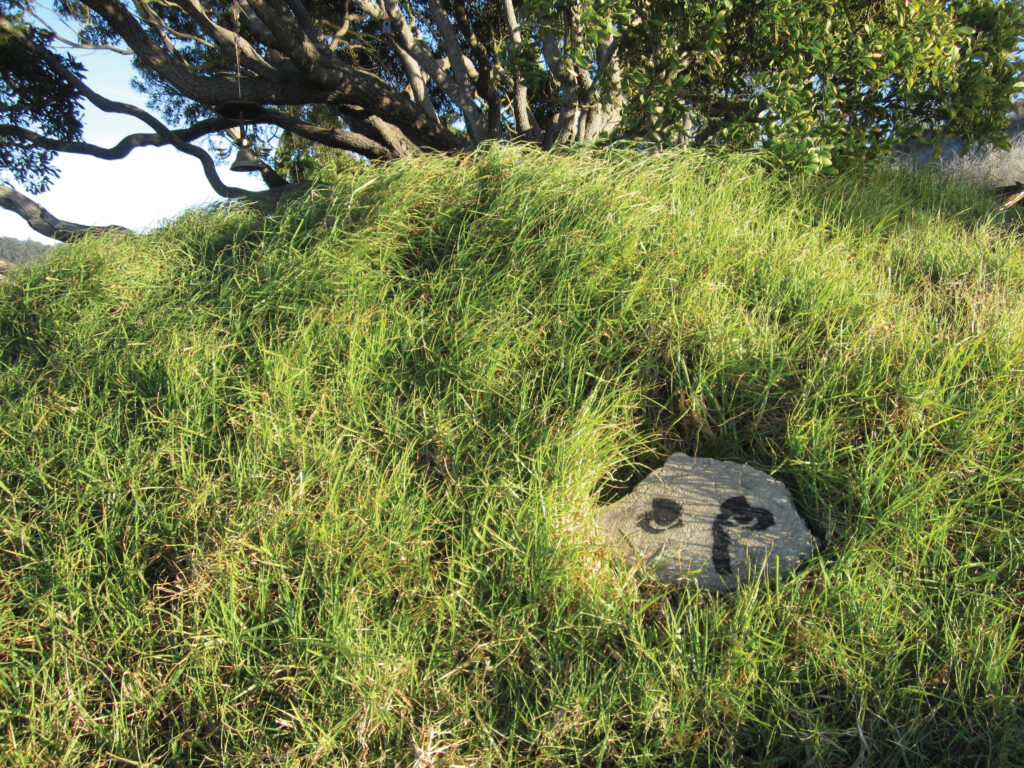
The Albany landfill and the struggle to preserve the last bit of wildness on the San Francisco Bay
The Albany landfill is an undeveloped spit of land, densely carpeted with vegetation, that pokes a little over a mile into San Francisco Bay from its east shore. Shaped like a tree that has fallen in the water, it begins as a broad elevated plateau, thins to a narrow neck, then widens out at the end to form what is known as “The Bulb.” Looking out from the Bulb on a clear day, the eye can sweep in a wide arc from the Bay Bridge and San Francisco skyline to the south, and then on to Alcatraz, the Golden Gate Bridge, and the headlands of Marin. Overhead is a huge sky. Far behind is a freeway clogged with cars—the loud, smoggy foreground of the cities of Albany, Richmond, and Berkeley.
The landfill opened for business in 1963 when the City of Albany signed a contract with the Sante Fe Railroad Company “for the purpose of creating usable land.” Prior to 1975, the operators of the landfill accepted garbage and refuse. But the landfill was intended for “demolition debris,” and over time the garbage was buried under tons of concrete rubble, rebar, wire mesh, corrugated tin, steel, iron, coke, slag, asphalt, glass, plastic, and excavated dirt. The first years of dumping created the plateau. When the mesa of rubble reached its peak, the trucks began dumping their loads further out into the Bay. The finger of fill narrowed to create the neck, then widened at its tip and kept widening until December 1983 when the landfill was closed. In just 20 years, over 60 acres of new land had been created by the dumping of approximately two million cubic yards of waste to an average depth of 40 feet.
There is nothing “natural” about the origin of the landfill. It was not shaped by glaciers, the movement of tectonic plates or the persistent pummeling of wind and water. Nature had little to do with its creation, but when the dumping stopped nature saw its chance. Gulls loved the landfill, as they love all landfills. They fed on the scraps of garbage it provided, defecated, and fertilized the soil with their poop. Dormant seeds sprouted in the rains. A first generation of drought-resistant grasses and weeds took root in the crevices. Tough and invasive fennel, pampas grass, blackberry, ice plant, French broom, and kikuyu grass led the way. Coyote bushes sprung up between broken slabs of concrete. Full grown eucalyptus, pines, palms, and acacia formed groves that provided shade from summer sun and shelter from winter winds. Clumps of chamomile grew in the dirt paths. Among the wild plants and weeds, the cast-off cuttings from domestic gardens went native and took on a second life. Wander through the Bulb and you’ll find feral rose bushes, clusters of shocking pink amaryllis, freesia, artichokes and irises, apple trees, plums, a peach and a loquat, even a patch of rare deep purple calla lilies. I’ve found a hollow covered in dark green ivy. And in the early spring, orange California poppies bloom on the Neck along the borders of the upper road.
Over time, the landfill became habitat. Garter snakes slid through the grass. Lizards darted over the rock. Rabbits scurried through the bushes. Snails clung to the stalks of the fennel and butterflies flitted among the blackberries. Swallows swooped and dove through the acacia branches. Humming birds hovered in the yellow French Broom. Brown and black Canadian geese stopped by on their migrations. Great blue herons speared fish in the lagoons. Soaring, current-riding gulls flew overhead. Snow white egrets poked about in the mud. Mockingbirds mocked from the tops of eucalyptus trees. Ravens nested in the acacia trees. Barn owls hunted at night. A 1994 census counted 87 different species of plants, 66 species of birds, and four mammals—black-tailed jackrabbits, gophers, squirrels and possum. Rats, mice, feral cats, and dogs were not counted.
The blanket of vegetation that grew on the landfill does not completely cover the rubble. Mounds of concrete and twisted sheet metal poke up through the bushes like the ruins of Mayan temples. Rusty hunks of steel, scaled and scabby, the color of blood drying in the sun, emerge from the dirt like bones from a killing field to trip the unwary traveler. A sculpture garden of rusty rebar, twisting like a yogi, rises above the weeds. As crumpled ruins, the remains of factories and freeways, after years of service to industry and the automobile, now serve the nature they once displaced. Birds nest in their crevices. Lizards lounge on their sun-warmed surfaces. The fallen monuments to progress and civilization shake hands with grass and weed, ocean and sky, let go of all ambitions and have become, in their retirement, more beautiful than they ever were in the prime of life.

Reclaimed by nature, this most “unnatural” of sites has become one of the last wild landscapes on San Francisco Bay. It is the untrammeled wildness of the place—its relative freedom of oversight by authorities, the abundance of raw materials it provides for those inclined to build and shape them into paintings, sculptures, and shanties—that explains why the landfill had become a home for the homeless and the locus of a wild, rebellious off-leash art.
Over the course of two decades, many homeless people made their home on the landfill. Their presence was well known to the City of Albany, which periodically threatened them with eviction. It was never clear what triggered the city’s anxiety to reassert control and evict the landfill’s illegal tenants. Sometimes it was events on the landfill—a fire, or a fight. Sometimes it seems the control imperative welled up in the bureaucracy without the spur of any external event. But much like the blackberries and pampas grasses, the Bulb’s residents formed deep roots in the topsoils of landfill debris, and often returned within months of the city’s removal efforts. By 2014, as anti-homeless policing continued to push people out of Albany and Berkeley, a resident-led census counted 70 full-time residents living among the refuse.
There is no point in romanticizing the lives homeless people have led on the landfill. Like the broken chunks of concrete that poke up through the underbrush, the landfill dwellers were pulverized by the wrecking ball of circumstance. Some of their lives have been catastrophes of lost possibility and unfulfilled potential. But they are lives nevertheless. If they have caused harm, it has been mainly to themselves. For some, though not all, life funneled down to one monotonous, repetitive craving. The need for a fix or a drink was their overseer. It whipped them from pillar to post. It excluded them from a “normal life” of weak pleasures and onerous obligations. It condemned them to a furtive outlaw existence. But there, on the landfill, even those “unworthy poor” for whom polite society has the least sympathy were able to gather together without fear of drawing attention. They created a neighborhood, enjoyed some privacy, relaxed, and watched the sun set as the fog rolled in. They flew a tattered flag, constructed campsites, built a house or a castle; kept to themselves or visited neighbors when they wished. They lived like the thistles and the fennel, without demands for repentance, reform, and self-improvement, without bed checks or urine tests. They managed their regrets. They escaped the endless round of roustings and arrests. And they ceased to be—for a time—a handy scapegoat, a metaphor for desperation, the recipients of a pale, thin gruel of charity for which they were expected to be grateful.
Our opinions about appropriate behavior, the worth of various members of our society, even hygiene, find socially acceptable expression as aesthetic preferences. Poverty and homelessness are ugly. Dirt is aesthetically displeasing and unhygienic. A mowed and weeded lawn “looks good,” and is indicative of respect for property values. A lawn that is uncut and going to seed brings down the neighborhood, and a neighborhood that is “brought down” attracts crime and delinquency. In all the discussions about the fate of the landfill, the linkage between aesthetic preferences and social prejudices was clearly present, but unexpressed. To the planners, the landfill had become a bad neighborhood. Left to its own devices, it was a magnet for homeless people and a venue for offensive artistic expression. It had to be brought under control. The dogs had to be leashed, the art had to be reigned in, and nature herself had to be restrained and redirected.
A park is nature shaped to fit our conceptions of appropriate order. We want nature to be beautiful, though nature herself is quite heedless of our preferences. What we judge to be beautiful in nature is determined by assumptions that may have little to do with biology and are not necessarily self-evident or universal. A rusty tangle of metal on the Bulb, sticking up through a thicket of fennel, can be viewed as beautiful or an eyesore. To some, overgrown rubble represents poverty, disorder, and neglect. Others see it as an example of nature—unconquerable, vast, and resilient—showing who’s boss. We have a choice. We can celebrate the indomitable weed sprouting between the cracks in the sidewalk, or we can nuke it with Roundup.

When we think of an urban park—Central Park in New York or Golden Gate Park in San Francisco—we imagine clearly defined paths, sculpted plantings, trash cans at appropriate intervals, gardeners to trim and prune, and maintenance crews removing rubbish and debris. We do not tend to imagine another sort of landscape, less measured and discrete, rougher at its edges, slightly dangerous and risky—the landscape of the landfill.
Liability. That’s the reason the authorities always gave before dismantling the Bulb’s unfettered constructions. Little does it matter that Albany had never been sued for anything that ever happened at the landfill. What really motivated the city was the desire to keep the landfill from spinning out of control. The unauthorized hooch builders, the skate bowl makers, the off-leash dog walkers, the off-leash artists, the homeless squatting in the bushes, the midnight ravers in the amphitheater—they all represented a threat to civic order and good governance. A certain amount of covert flouting of authority was tolerated. When it got too blatant, action had to be taken.
In April 2014, as the landfill’s incorporation into Eastshore State Park loomed like a cloud along the shoreline’s western horizon, the City of Albany evicted its residents one final time, destroying their homes, obliterating their trails and footpaths in the process.
Why do I care about the landfill? The world reels toward catastrophe. Pain is the air we breathe. The rivers are choked with corpses. Crops fail. Rebellion brings swift retribution. The tortured pray for death while children forage in the dirt with the rat of hunger in their bellies. Meanwhile, the rich and powerful, their eyes attuned only to the spectrum of profit and power, lose no sleep over the plight of their invisible victims. And the ice caps melt. The frogs die. And the whales go mad.
There is no escape, but there is a need for temporary refuge. And nature, despite its utter indifference to whether human beings live or die, has been a perennial refuge from the discontents of civilization. Despite its utter purposelessness, it provides solace to the human mind with all its nattering intentions. The landfill has been that for me—a refuge and a solace. At the same time it’s contested territory. And the battle to keep the landfill wild and unregulated seems the tiniest piece of the larger battle. It’s not a battle we will ever win, definitively, permanently. And so we embrace impermanence, and continue to fight for the things we love. What other choice do we have?
Osha Neumann is a lawyer and activist in Berkeley.
